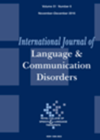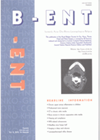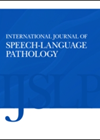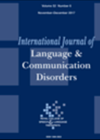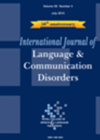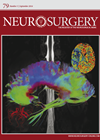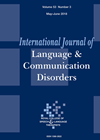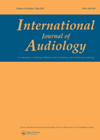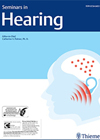
Journal Reviews
Parental role in childhood speech disorder intervention
Several studies have indicated that parents play an effective role in the management of early communication disorders like stuttering and language delay in children, especially when they are supported by clinicians. This comprehensive review attempted to study published literature regarding...
Predicting speech recognition in adults with cochlear implants
This was a combined prospective and retrospective study from Belgium that looked at factors influencing speech recognition scores in quiet conditions (retrospectively) and speech reception threshold levels (SRT) in fixed noise conditions (prospectively) after cochlear implantation in postlingually deaf adults....
Positive practical communication skills for medics
Communication training for medical students generally focuses on communicating with unimpaired individuals. This article describes how a speech and language therapy department at the University of Gothenburg in Sweden trialled a new approach to teaching medical students. Fifty-nine undergraduate medical...
Voice impairment following spinal cord injury
Patients with cervical spinal cord injury face several clinical problems. One of the problems is voice impairment secondary to poor respiratory support. Their syllables per breath, vocal intensity and vocal quality are impaired. This paper studied the impact of the...
Quality of life measurement tools in children with speech and language difficulties
The authors of this paper reviewed various quality of life measurement tools which are used to assess the effects of speech and language difficulties in children and adolescents. Measuring quality of life outcomes in children with these difficulties is not...
Preserving hearing in NF2 patients
Neurofibromatosis type 2 (NF2) is known to result in bilateral hearing loss, even when there is no significant tumour growth. The cause is postulated to be multifactorial: stretching and compression of the cochlear nerve by the tumour, impairment of labyrinthine...
Working with clients of communication disorders from culturally and linguistically diverse populations
Speech language therapists (SLTs) deliver evidence based services worldwide for communication disorders to culturally and linguistically diverse (CLD) populations. They have to modify their approaches and tailor them to the needs of their students / patients. This article studies the...
Swahili speech development in pre-school children
This study describes the speech development of 24 typically developing first language Swahili speaking children between the ages of three and five years 11 months in Dar es Salaam, Tanzania and was motivated by the 2013 position paper drafted by...
Hearing protection and hearing loss
This study examined the interaction of hearing protection for noise reduction and hearing loss with speech recognition performance. Forty five subjects with four hearing loss profiles were fitted with two different level dependent hearing protectors (circumaural and inserts) in two...
Hearing protectors and speech perception
This study tested 31 subjects using hearing protectors by maintaining a constant intensity level for the speech signal while varying background noise levels. The goal was to use this test to detect speech perceptual abilities under different hearing protectors –...
Hearing aid standards and test systems
Hearing aids are the most used management / rehabilitation option for people with hearing loss. Generally, hearing instrument manufacturers perform the hearing aid performance measurements and provide its specification in terms of functionality. However, it is also common for government...
Cochlear implantation in Ménière’s disease
This was a Belgian retrospective study of seven patients with Ménière’s disease who underwent cochlear implantation. All patients had bilateral severe to profound hearing loss and all met AAO-HNS criteria for Ménière’s disease. Follow-up for patients ranged from six months...

